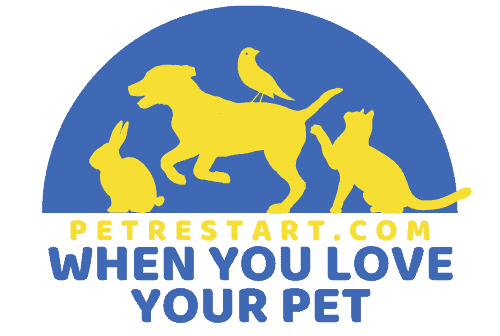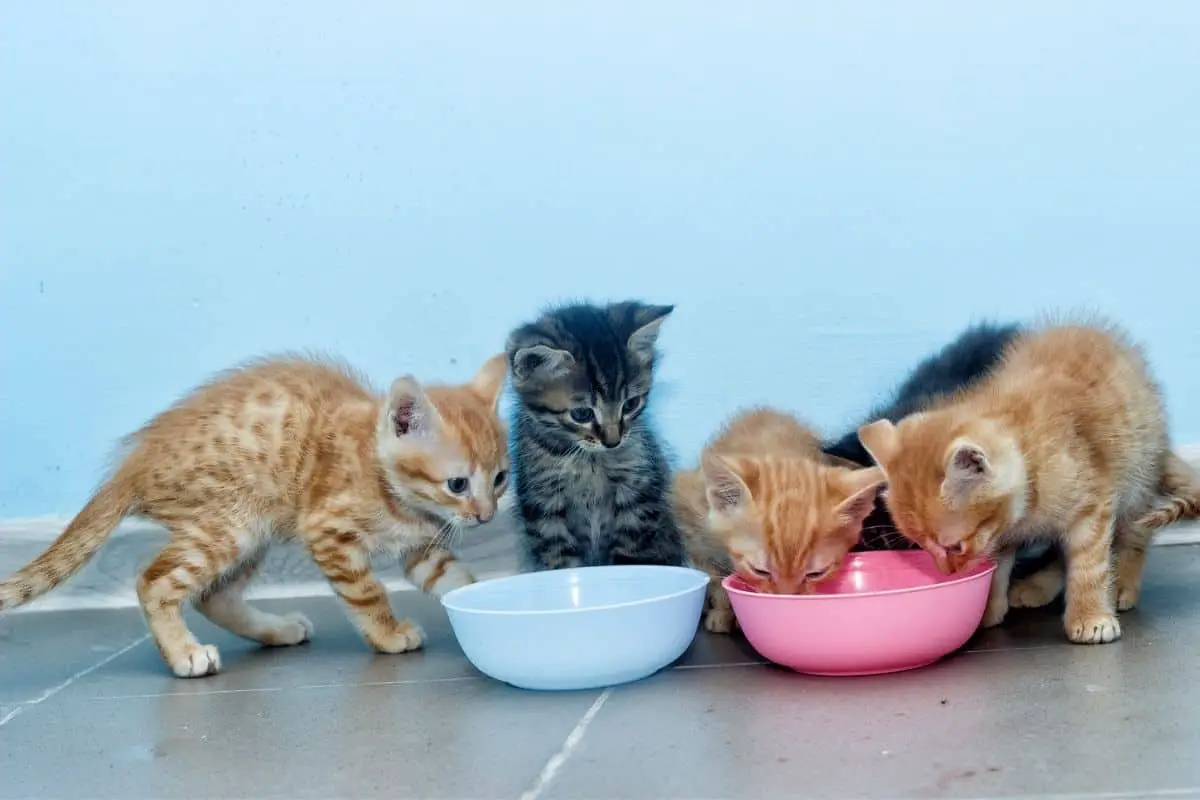Whether you are thinking about adopting a kitten or already welcomed your fluffy feline into your family, it sure is an exciting experience! It’s no secret that kittens are little balls of fluff, love, and… energy! When adding a kitten to your family, you sign up to love and care for them and provide them with everything they need.
Your kitten will eat more during growth spurts. He needs to eat a lot more to meet his daily nutritional requirements. The nutrients in the kitten’s food will provide him with the raw materials and energy he needs to build an immune system and grow. A growing kitten will need more food to develop fully.
Kittens may be born blind and deaf, but your helpless ball of fur quickly grows into a cool cat! The first month with your kitten will be full of changes, but will be purr-fectly enjoyable! If you wonder if your kitten eats more during his growth spurts, you have come to the right place!
How Much Does Your Kitten Need To Eat?
An active and energetic growing kitten will need more food and will tend to eat much more, which is entirely normal! A precisely formulated food ensures that your kitten will have the exact nutrients it needs to provide him with protein, vitamins, and minerals, which are essential to developing in a healthy way.
While satisfying your kitten’s nutritional requirements, their first food should be beneficial and suitable for their young digestive system and teeth. As kittens retain their milk teeth until they are four months old, you must find a small-sized kibble that is easy to chew.
A kitten should normally eat between four and five meals daily! Because of a kitten’s tiny stomach, it is best to divide his food into four to five small meals per day until six months of age. You can let young kittens eat as much as they want; kittens will almost certainly not become overweight or obese.
Your kitten’s growth is not only affected by the type of breed but also by the diet you provide them with. Kittens need to consume a vast amount of daily calories during their first six months of growth to reach the proper size.
When your kitten does not stop eating, check the ingredients and quality of the food you are providing them with. Food that mainly consists of grain fillers and low-quality protein will satisfy your kitten’s hunger for only short periods. Your kitten will quickly become hungry again even after just eating.
Importance Of Healthy Diet During Growth Spurt
Kittens have particular dietary needs to grow into healthy, active adult cats. As they are carnivores, all kittens need more protein than every other pet. Always make sure that your kitten is eating regularly and enough.
When animals don’t eat enough, especially during a growth spurt, they have no other choice but to rely on their fat reserves for energy. This means that your kitten will lose fat reserves, which ultimately results in weight loss and poor development during the most important stage of its life.
An appropriate kitten diet should never have a carbohydrate source listed in the first five ingredients but should instead have protein and water sources.
If you are unsure if you are giving your kitten the correct diet, looking at the name of a kitten’s food can help you with your choice. For example, a food named “chicken and rice” would indicate that the contents are high in carbohydrates, which is only suitable for short-term energy release.
In addition, the label of the food you are buying should clearly state that it is complete and balanced for all stages of growth, as your kitten needs all the energy he can get going through his growth spurt.
Although providing a good diet is only one aspect of caring for your kitten, it is the most important one with good nutrition. A kitten undergoing a growth spurt will quickly grow from a sleepy kitten into a robust and young adult cat.
What Do Kittens Need Out Of Their Food?
Because kittens grow fast, they have much higher nutritional demands than an adult cat. It is possible to start weaning kittens from three to four weeks of age. This is when you should start to offer small amounts of good quality food to sustain the pace at which they are growing.
Your kitten’s weight will double or even triple during the first few weeks of its life. As a new parent, you need to support this explosive growth and high energy levels. The high energy levels of your kitty can make it a lot more difficult for him to get enough calories out of a single meal.
A kitten has a much higher requirement for protein, amino acids, minerals, and vitamins. Kittens should get at least 30% of their energy out of protein. After weaning, kittens need a good source of energy. Kitten food is denser with nutrients, supplying calories in smaller amounts, which is ultimately easier for their tiny stomachs to hold down.
For these reasons, most experts recommend you feed your kitten food specially labeled as appropriate for kittens, as that food will have the necessary formula.
You can also offer some natural foods to provide your kitten with variety. Natural food like human-grade raw meat is a good choice. You can slice up some raw lamb meat or pieces of raw chicken. Raw food you give to your kitten must always be fresh and avoid feeding them raw meat before twenty weeks of age.
Choosing to feed your kitten raw food can help to eliminate any nutritional imbalances or deficiencies. However, homemade food without any specific, professional nutritional calculations will not guarantee an adequate balance of nutrients. This is why it is vital to mix your kitten’s formula food with raw food, just in case!
At What Age Do Kittens Grow The Most?
Kittens are living and breathing balls of cuteness, and we can’t seem to get over their adorable size! We know they can’t stay small forever, but when should we prepare ourselves for the enormous growth spurt?
Kittens grow the most between 0 and 6 months! The most significant growth spurt in your kitten’s life happens between the age of two and six months, and it is also the most impressionable time in your kitten’s life.
A lot happens during the first six months of a kitten’s development; this is the essential developing stage in a cat’s life! From zero to two months, your kitten’s eyes and ears open, baby teeth emerge, and he is still dependent on his mom for the nutrition he needs. He also learns to groom himself, even though the mom does all the work.
Between two and six months, your kitten learns about independence. He is now ready to use his litter pan, loses his baby teeth, and is ready to switch to kitten food. Your kitten is now also old enough for the first vaccines, which is crucial to his health and immune system.
By the age of eight weeks, your kitten will be old enough to wean off mom, and you will be able to adopt him. By this age, your kitten can be potty trained, as he will be like a sponge, absorbing all and any new information.
Conclusion
It is safe to assume that you only want the best for your adorable kitten! If you have just acquired a kitten, you’re probably learning everything you can about caring for your kitten.
During your kitten’s growth spurt, it is extremely important to provide him with the correct food for a balanced diet so he can develop ideally, as he should. This will not only benefit your kitten physically but will help him to connect and trust you during the most critical stage of his life.
Paying attention to what your kitten eats will ensure that he lives a longer, healthier life. You want to do anything you can to ensure that your newest addition to the family grows up to be a strong, healthy adult cat, and proper feeding is a big part of the equation!
Sources
- When Does a Kitten Become a Cat?
- Kitten Stages of Development: What to Expect
- When Do Cats Stop Growing? Reliable Ways to Know When Cats Reach Their Full Size.
- At What Age Are Cats Fully Grown?.
- Kitten Development From Birth To Adulthood
- Feeding your Cat or Kitten
- What should I feed my kitten? – RSPCA Knowledgebase
- What to feed kittens – ROYAL CANIN ®
- Cat Not Eating Causes and Treatments
- Bringing Home Your New Kitten | All About Cats




